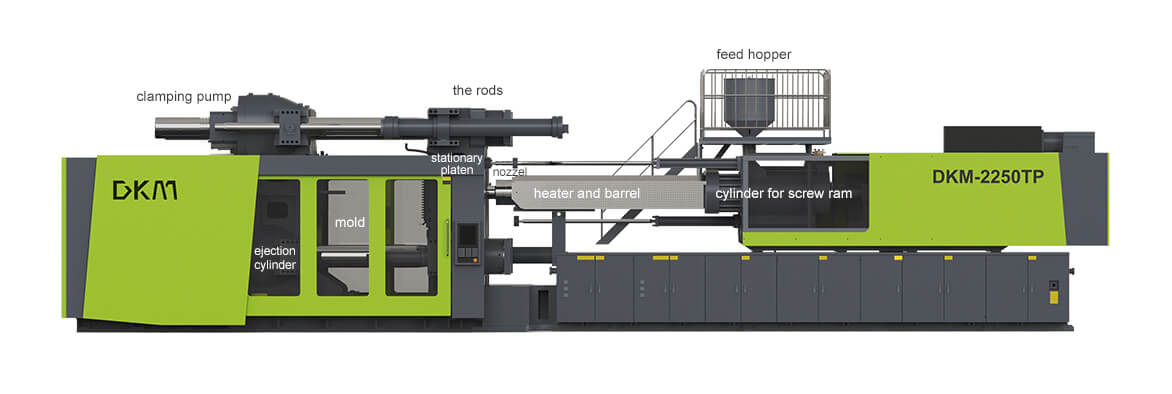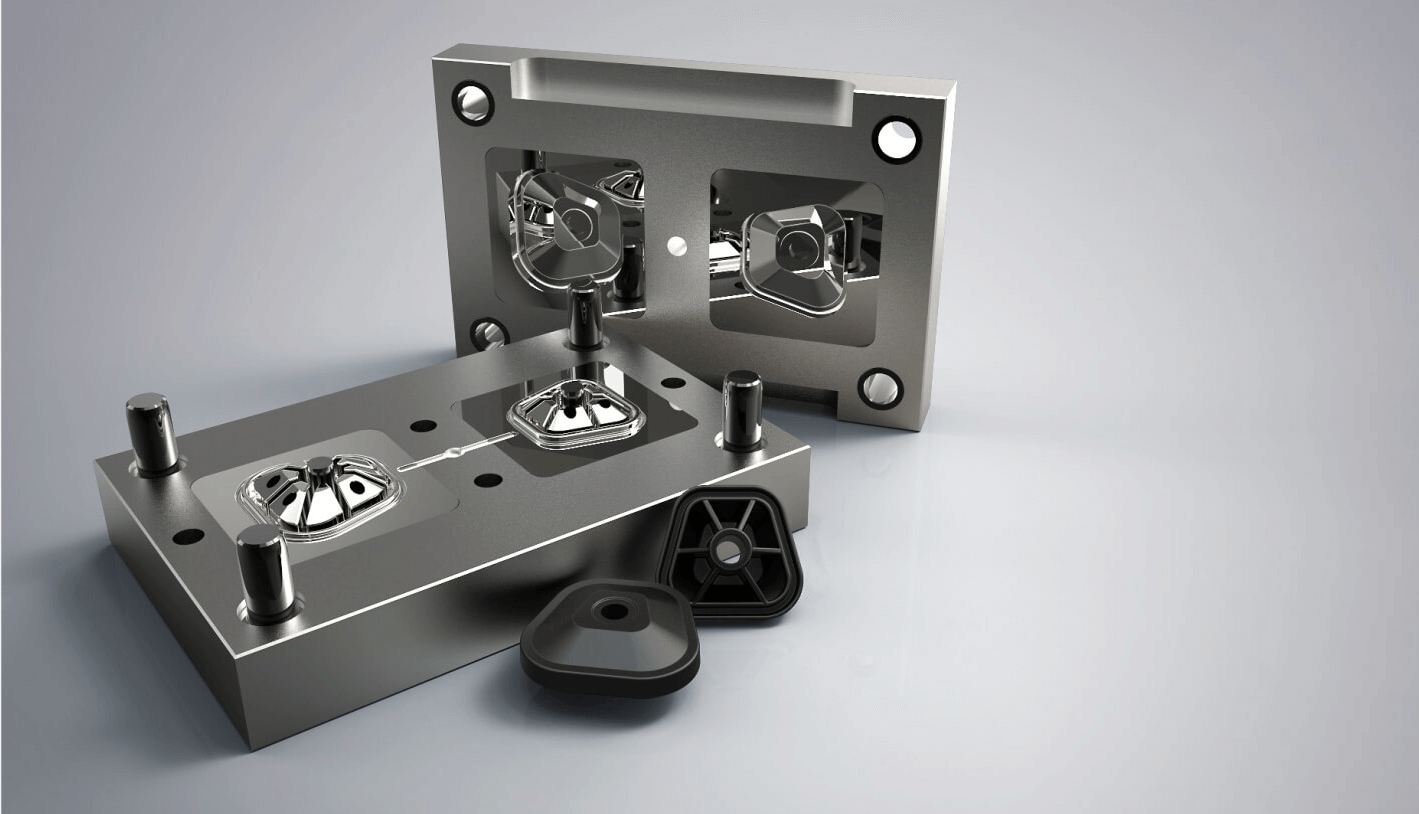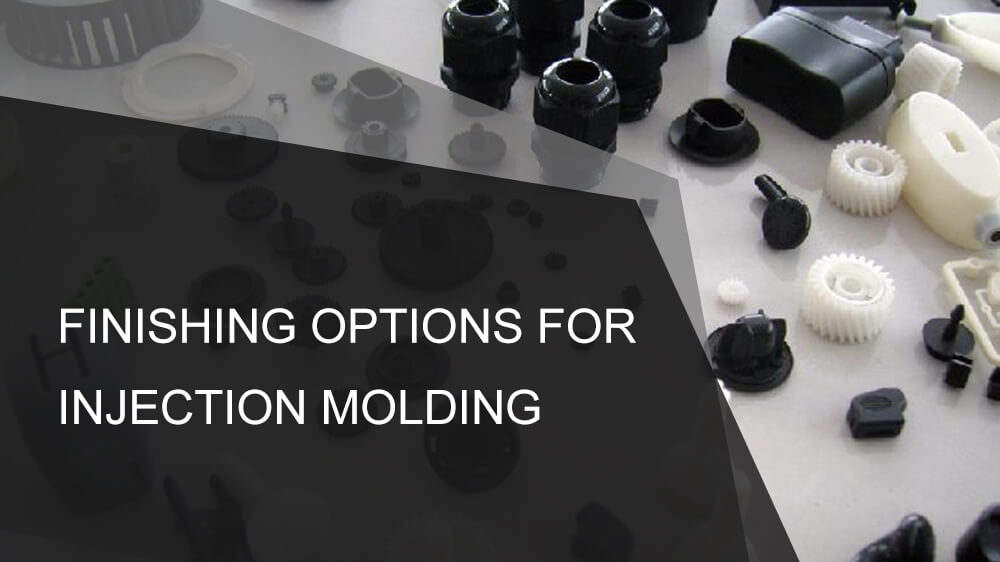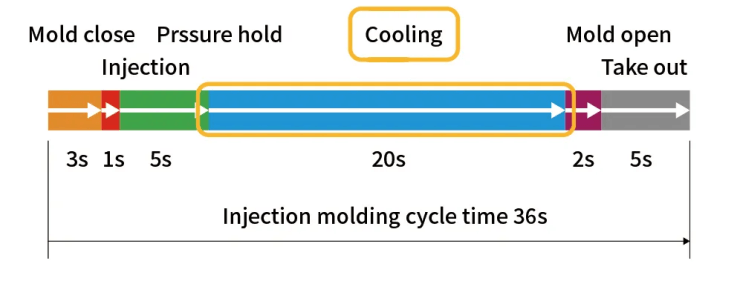

Injection molding is a highly versatile manufacturing process that plays a crucial role in the production of various plastic components. It involves the injection of molten plastic material into a mold cavity under high pressure, resulting in the formation of intricately designed and dimensionally accurate products. The process begins with the preparation of the plastic material, which is heated to its melting point and then injected into the mold using a specialized injection molding machine. The molten plastic fills the mold cavity, taking the shape of the desired product.
One of the key advantages of plastic injection molding is its ability to produce complex and intricate designs with high precision. The mold can be customized to incorporate intricate features, such as undercuts, thin walls, and fine details, enabling the production of parts that would be difficult or impossible to achieve with other manufacturing methods. This makes injection molding particularly suitable for applications requiring intricate geometries, such as medical devices, consumer electronics, and automotive components.
Dakumar Plastic injection molding machines offers several main advantages that make it a preferred option for manufacturing. Let me take you through some of these benefits to help you consider this option over others.
Achieving low cost per part is a crucial aspect of cost-effective manufacturing. In plastic injection molding, high output production runs allow for efficient and cost-efficient manufacturing. By producing a large number of parts in a single production run, economies of scale can be achieved, reducing the overall cost per part. This is especially beneficial when manufacturing medium volumes of parts, where the cost per part can be significantly lower compared to low-volume production.
Furthermore, the choice of molds can also impact the cost per part in plastic injection molding. Aluminium molds offer a cost-effective alternative to steel molds, especially for medium volume production. While steel molds are durable and suitable for high-volume production runs, opting for aluminium molds can help keep the costs low for medium volume production. By choosing the right mold material and production volume, manufacturers can achieve a low cost per part and enhance the cost-effectiveness of the manufacturing process.
Ensuring reliable reproduction with consistent repeatability is crucial for manufacturers in producing high-quality products. In the realm of plastic injection molding, the ability to replicate identical parts over and over again is ideal for meeting the needs of various industries. Manufacturers can rely on this process to consistently reproduce parts with high tolerances, ensuring the reliability and functionality of the end products.
Plastic injection molding is particularly well-suited for achieving such reliable reproduction. Whether there is a need to produce parts in low or high volumes, the process excels in delivering consistent results. Identical products can be reproduced across various production runs, ensuring that each part meets the required specifications and maintains high tolerances. This capability allows manufacturers to meet the demands of industries that require reliable and precise components, such as automotive, medical, and consumer electronics sectors.
Plastic injection molding offers an extensive material selection, allowing manufacturers to explore a huge range of options to meet their specific needs. Depending on the properties required for the final part, manufacturers are not limited to a few choices. Plastic materials, including liquid silicone rubber molding, offer a wide array of options in terms of fillers, strength, and colors. Manufacturers can choose from different options and talk to experts, such as Protolabs, to achieve the desired properties for the completed part.
The versatility of plastic injection molding is evident in the number of different materials that can be utilized. Manufacturers have the flexibility to select the material that best suits their requirements, whether it's for strength, appearance, or other specific properties. This freedom of choice allows for the production of parts with diverse characteristics and colors. The range of materials available in plastic injection molding ensures that manufacturers can achieve the desired outcome and meet the needs of various industries.
Sustainable production in plastic injection molding aims to minimize waste during the molding process, making it an environmentally friendly choice compared to other manufacturing processes. The amount of waste generated is very little, thanks to the efficiency of the molding process. Any unused plastic can be easily recycled for future use, reducing the overall environmental impact.
The molding process itself is designed to minimize waste, ensuring that materials are used efficiently. Compared to other manufacturing methods, plastic injection molding produces very little waste. Any excess or unused plastic can be collected, recycled, and reused in future production runs. This closed-loop approach helps minimize the amount of plastic waste that would otherwise end up in landfills or contribute to environmental pollution. By promoting recycling and reusing materials, plastic injection molding aligns with sustainable practices and supports a greener future.
Injection molding is a highly effective process that allows for the production of highly complex parts with exceptional precision and uniformity. It offers the ability to handle millions of parts, making it ideal for high-volume injection molding. The process provides the means to maximize precision and quality, ensuring virtually identical parts with tight tolerances. By taking into account key design elements, complex part designs can be created without sacrificing efficiency or complexity. This inherent capability of injection molding enables the achievement of accurate and repeatable measurements across production runs.
One of the key advantages of injection molding is its ability to handle highly complex part designs while maintaining uniformity and precision. The process offers the means to create intricate and detailed parts with tight tolerances, ensuring high-quality and accurate results. By maximizing efficiency and taking into consideration the ideal design parameters, injection molders can produce complex parts without sacrificing quality or complexity. The equipment used in injection molding enables the achievement of precise and repeatable measurements, ensuring consistency and reliability across production runs.

Streamlining the workflow in plastic injection molding can significantly minimize or even eliminate the need for post-processing of parts. Generally, this manufacturing process produces parts with good aesthetics directly from the tooling. The special finishes, logos, or text can be incorporated into the molded parts without the requirement for additional post-production steps. This streamlined workflow saves time and resources by producing finished parts that show excellent quality and aesthetics right out of the molding process.
In plastic injection molding, very little post-production work is usually necessary. The molded parts often exhibit a high-quality surface finish, eliminating the need for additional polishing or refinishing. Logos or text can be engraved directly onto the molded parts during the molding process itself, eliminating the need for separate engraving operations. This streamlined workflow not only saves time but also ensures consistent quality and precise incorporation of desired design elements into the molded parts. Overall, the minimized or eliminated post-processing steps in plastic injection molding contribute to a more efficient and cost-effective production process.
Injection molding enables manufacturers to unlock the potential for highly complex and detailed geometries in the production of plastic parts. By employing advanced tool design and utilizing a scientific molding approach, manufacturers can optimize the injection molding process to achieve consistent and precise results. The ability to manufacture complex geometries in large volumes with virtually no deviation is a testament to the tightly controlled and repeatable nature of the manufacturing process.
Manufacturers who specialize in injection molding have the right expertise and training to develop and document specifications, settings, and steps necessary to achieve impressive details in the produced parts. They employ comprehensive data collection and analysis to ensure that the process is optimized for consistency and accuracy. With a focus on process optimization and specialization, engineers in the field of injection molding can accurately replicate intricate geometries, meeting the exact specifications required by the customers. This level of control and precision is crucial, especially in industries where highly detailed parts are needed, such as in the production of handheld devices.

Injection molding is an efficient and rapid form of molding that offers numerous advantages for manufacturers. One of the key reasons for its popularity is the high production output rate and speed it provides. Regardless of the complexity or size of the desired parts, injection molding can efficiently produce them within a short molding cycle. This method of manufacturing ensures the production of high-quality injection molded parts with precision and consistency.
Collaborating with a custom injection molding partner brings additional benefits to manufacturers. By leveraging the expertise of the molder's teams in engineering and production, manufacturers can determine the best practices to optimize part design and the manufacturing process. With decades of expertise, these teams can streamline the production workflow, reducing time and cost commitments. Designing upfront and implementing best practices help prevent problems and costly redos. Furthermore, custom injection molding partners often offer value-added services throughout the production process steps, enhancing the overall value proposition for manufacturers.
Injection molding offers several benefits that contribute to strengthened product performance by enhancing both strength and versatility. Plastics, especially thermoplastics, have experienced a steady increase in strength while maintaining their lightweight nature. They can withstand the harshest environments and serve as excellent alternatives to metal parts. Injection molding allows for the production of versatile components using a wide range of engineered materials. Manufacturers can choose from various options, including high-performance blends and hybrids, to meet the specific requirements of complex injection molding applications. The characteristics of the materials used, such as tensile strength, can be precisely formulated to achieve the desired performance.
Of all the manufacturing methods available, injection molding is appreciated for its ability to strengthen product performance. The steady increase in the strength of plastics, coupled with their lightweight nature, makes them ideal choices for various applications. Whether it is withstanding harsh environments or serving as versatile alternatives to metal parts, injection molding offers the flexibility to choose from a range of engineered materials. This allows manufacturers to address the complex needs of injection molding applications, utilizing high-performance blends and hybrids. With the ability to tailor the characteristics of the materials, such as tensile strength, manufacturers can achieve strengthened product performance that meets very specific requirements.
The plastic injection molding process offers remarkable flexibility in design, allowing for a wide range of color and material selections. OEMs can take advantage of this flexibility to meet specific project requirements, including custom color choices. The benefit of this flexibility extends to design choices, as various metals and materials can be utilized in the molding process. Whether it's clear parts or vibrant colors, plastics can be enhanced with additives to achieve desired properties such as biocompatibility. Over molding is another solution that OEMs can explore to further expand the design possibilities and create innovative products.
The versatility of the plastic injection molding process allows for customization to match the unique project requirements of OEMs. The flexibility in material and color choices empowers OEMs to create designs that truly stand out. Plastics offer a wide range of properties, making them suitable for a variety of applications. OEMs can leverage the molding process to produce clear parts or incorporate different colors to enhance the visual appeal of their products. By adding additives, plastics can acquire specific properties such as biocompatibility, expanding their potential applications. Over molding provides an additional solution, enabling OEMs to combine multiple materials and create complex designs with exceptional functionality.
At Dakumar, we take pride in our ongoing green initiatives and commitment to the environment. As a responsible corporate citizen, we understand the importance of minimizing waste and its positive impact on both the planet and our society. In the field of injection molding, we strive to implement sustainable practices that contribute to waste reduction and promote a greener future.
One way we address waste reduction is through the use of plastic regrind. By utilizing this waste plastic generated during the injection molding process, we minimize material waste and directly benefit the environment. Through recycling and regrounding, we ensure that these materials find future use rather than being discarded. This not only has ecological benefits but also economic benefits, as it reduces the need for virgin plastic materials and helps conserve valuable resources.
In traditional manufacturing processes, such as sprue and runner systems, there is often a significant amount of unused plastic generated as post-production scrap. By employing efficient recycling techniques, we aim to maximize the utilization of these materials and reduce overall waste. This aligns with our commitment to sustainability and our dedication to providing environmentally responsible solutions for our OEM partners.
One of the significant advantages of plastic injection molding is the potential for labor cost savings in manufacturing operations. Compared to other types of molding processes, injection molding can be highly efficient and effective in producing parts, resulting in reduced labor costs. The use of automated processes and advanced molding equipment, such as self-gating systems and automated process tools, streamline operations and minimize the need for constant supervision.
In mass production scenarios, injection molding stands out for its ability to achieve high output rates with minimal labor requirements. Machines and robots can perform various tasks that would otherwise rely on the manual work of operators or technicians. This automated approach streamlines the manufacturing process and greatly reduces labor costs. With controlled and automated operations, a sole operator or technician can manage multiple machines, enabling manufacturers to save money by keeping labor expenses relatively low while maintaining a high level of productivity.
By reducing the reliance on manual labor, injection molding mitigates the risks associated with human error and minimizes the need for rework due to part defects. The streamlined and automated nature of the process contributes to higher efficiency and effectiveness, ensuring consistent production quality. This allows OEMs to allocate their resources more efficiently and focus on other critical aspects of their operations. In summary, the labor cost savings achieved through the use of injection molding provides manufacturers with a competitive advantage by reducing manufacturing costs, enhancing productivity, and improving overall operational efficiency.

When it comes to achieving the desired final look for injection molded parts, the selection of appropriate surface finishes plays a crucial role. These finishes have the power to enhance the physical and chemical properties of the plastics used, allowing for a wide range of applications. Matte finishes, in particular, offer a unique texture that sets injection molded parts apart. Their non-glossy appearance adds a touch of sophistication and uniqueness to the finished products. By incorporating matte finishes, manufacturers can create visually appealing parts that fulfill the desired aesthetic while maintaining the required physical and chemical properties.
In addition to matte finishes, the process of engraving brings further value to injection molded parts. Engraving allows for the precise carving of patterns or designs onto the surface, resulting in a smooth and artistic finish. This technique enhances the overall appearance of the parts and offers customization options for various applications. Whether it's creating intricate details or adding branding elements, engraving provides manufacturers with the opportunity to transform injection molded parts into truly distinctive and personalized products.
Lightweight Product Development: Create Lightweight and Efficient Products
The widespread use of lightweight plastic injection molded products has revolutionized various industries, especially the automotive sector. OEMs are increasingly opting for these lightweight alternatives to replace traditional metal parts, resulting in significant differences in weight reduction. The automotive industry, in particular, has embraced the advantages offered by lightweight plastic components, as they provide a winning combination of strength, durability, and reduced weight. By utilizing high-strength, lightweight thermoplastics, manufacturers are able to meet the demanding requirements of the industry while achieving substantial weight reduction compared to their metal counterparts.
The advantages of lightweight plastic injection molded products extend beyond the automotive sector and find application in a wide range of industries. By replacing metal components with lightweight plastic parts, manufacturers can create products that excel in both performance and efficiency. The use of thermoplastics offers strength and durability while effectively reducing overall weight, resulting in enhanced fuel efficiency, improved handling, and reduced environmental impact. Whether it's in aerospace, consumer electronics, or other industries, the adoption of lightweight plastic solutions opens doors for innovation and optimization, enabling manufacturers to create products that meet the evolving needs of today's market.
The utilization of multiple types of plastics is essential when it comes to diverse applications that require different properties and functionalities. Manufacturers understand the importance of choosing the right plastics that guarantee safety, combining various materials to meet the unique requirements of each project. This approach tremendously mitigates risks and ensures compatibility in complex part designs and components. From simple to extremely complicated designs, the expertise of molder's project engineers plays a crucial role in preventing defects and injury risks. Their in-depth knowledge and understanding of plastics enable them to make informed choices that minimize warranty claims and ensure optimal performance.
In the realm of diverse plastic applications, the significance of compatibility cannot be overstated. Molding complex part designs with multiple plastic materials requires expertise to ensure they work seamlessly together. The guidance and input of molder's project engineers are crucial in selecting the appropriate plastics that will harmoniously coexist under different circumstances. This expertise mitigates the risk of defects and injury, as compatibility issues can lead to subpar performance or even safety hazards. By leveraging the knowledge of these engineers, manufacturers can confidently make choices that align with their specific requirements, ultimately delivering high-quality products that meet customer expectations.
Precision Engineering: Produce High-Precision Products
In the realm of precision engineering, the ability to achieve complex and tight tolerances is paramount. Manufacturers strive to produce accurate and repeatable products with intricate designs, incorporating small features that can hold up to the demands of mass production. Precision molded plastic components, manufactured using the best injection molding techniques, enable high precision production. Injection molders utilize advanced equipment and precise measurements to ensure that each production run meets the required tolerances. By leveraging the capabilities of plastic injection molding, manufacturers have the freedom to create designs with intricate features, such as image-like palm bosses, ribs, metal inserts, side cores, and even small holes with sliding shut-off features. This tooling versatility and precision allow for the production of small parts that meet the demanding requirements of various industries, from plastic fabrication to the vacuum forming process.
The modern high-speed injection mold equipment used in precision engineering enables manufacturers to produce plastic components with exceptional precision and consistency. This process is the preferred choice for achieving tight tolerances in high-volume production runs. The molding process, combined with the expertise of injection molders, guarantees the production of high-precision products that meet exact specifications. Whether it's connectors, gears, or other intricate parts, the molding techniques employed in precision engineering ensure that each component is manufactured with precision, contributing to the overall performance and quality of the final product.
Accelerated time to market is crucial for manufacturers seeking a competitive edge in today's fast-paced market. Achieving a shortened product development timeline is a key objective in this pursuit. By doing so, manufacturers can quickly introduce their products to the market, ensuring a timely response to customer demands and gaining an advantage over competitors.
To accomplish this, skilled injection molding engineers play a vital role. With their expertise and specialized skill sets, they help original equipment manufacturers (OEMs) streamline production cycles and produce defect-free parts more efficiently. Shorter development timelines enable manufacturers to swiftly respond to market trends and consumer preferences, capitalizing on opportunities and maintaining a strong foothold in the market. Embracing a shortened product development timeline means manufacturers can rapidly bring their products to market, ensuring they remain competitive in an ever-evolving landscape. With the assistance of skilled injection molding engineers and a focus on quick turnaround times, manufacturers can achieve accelerated time to market, gaining a significant advantage over their competitors.
Entities: benefits, steady increase, appreciated, lightweight, withstand, versatile, choose, formulated, injection molding, strength, versatility, plastics, thermoplastics, harshest environments, metal parts, engineered materials, complex injection molding applications, high-performance blends, hybrids, part requirements, characteristics, tensile strength. Semantically related words: injection molding, steady increase, strength, versatility, plastics, lightweight, thermoplastics, harshest environments, metal parts, engineered materials, complex injection molding applications, high-performance blends, hybrids, part requirements, characteristics, tensile strength. Contextually related words: injection molding, steady increase, strength, versatility, plastics, lightweight, thermoplastics, harshest environments, metal parts, engineered materials, complex injection molding applications, high-performance blends, hybrids, specific part requirements, appreciated, benefits, choose, formulated.

Rapid product development with shortened timelines is a key driver for manufacturers seeking a competitive advantage in the market. The expertise of injection mold engineers plays a crucial role in achieving this goal. Leveraging their skill sets, these professionals collaborate with OEMs to streamline production cycles and ensure the creation of defect-free parts. By prioritizing shorter timelines, manufacturers can respontd quickly to market demands, gain a competitive edge, and capitalize on emerging trends. This approach optimizes production cycles, leading to efficient and cost-effective manufacturing processes.
The partnership between injection mold engineers and OEMs enables manufacturers to accelerate their product development timelines. Through their expertise in designing and manufacturing high-quality parts, they deliver products that meet industry standards and exceed customer expectations. Embracing rapid product development allows manufacturers to introduce innovative products swiftly, enhancing their market position and attracting customers in a highly competitive landscape. By focusing on shorter timelines, manufacturers can seize growth opportunities and achieve success through optimized manufacturing processes.
Consistent high output is a critical aspect of high-output production in the realm of injection molding. To achieve this, manufacturers employ a repeatable process that ensures consistent quality and the production of complex plastic parts with tight tolerances. The use of leading-edge technologies and continuous improvement practices further enhances the efficiency and reliability of the production process.
Injection molding, as a solution for high-output production, relies on precise tooling and skilled molders. The process involves the careful design and fabrication of molds to meet the requirements of producing intricate plastic parts with consistent quality. By implementing continuous improvement practices and embracing leading-edge technologies, manufacturers can optimize their tooling and enhance the production capabilities.
Consistency and repeatability are key factors in achieving high-output production. Manufacturers prioritize the establishment of a consistent process that delivers reliable results with each production run. This consistent process, supported by rigorous quality control measures, ensures that the manufactured parts meet the specified tolerances and adhere to strict quality standards.
The given content does not directly mention the strength of injection molding. However, it provides information about the tensile strength of PAI, which is 21,000 psi (145 MPa) and is nearly 75% higher than Nylon. PAI is described as a perfect choice for high temperature and high strength applications where others fail to perform. While injection molding is a manufacturing process used to produce various plastic parts, the strength of injection molding is not explicitly mentioned in the given information.
